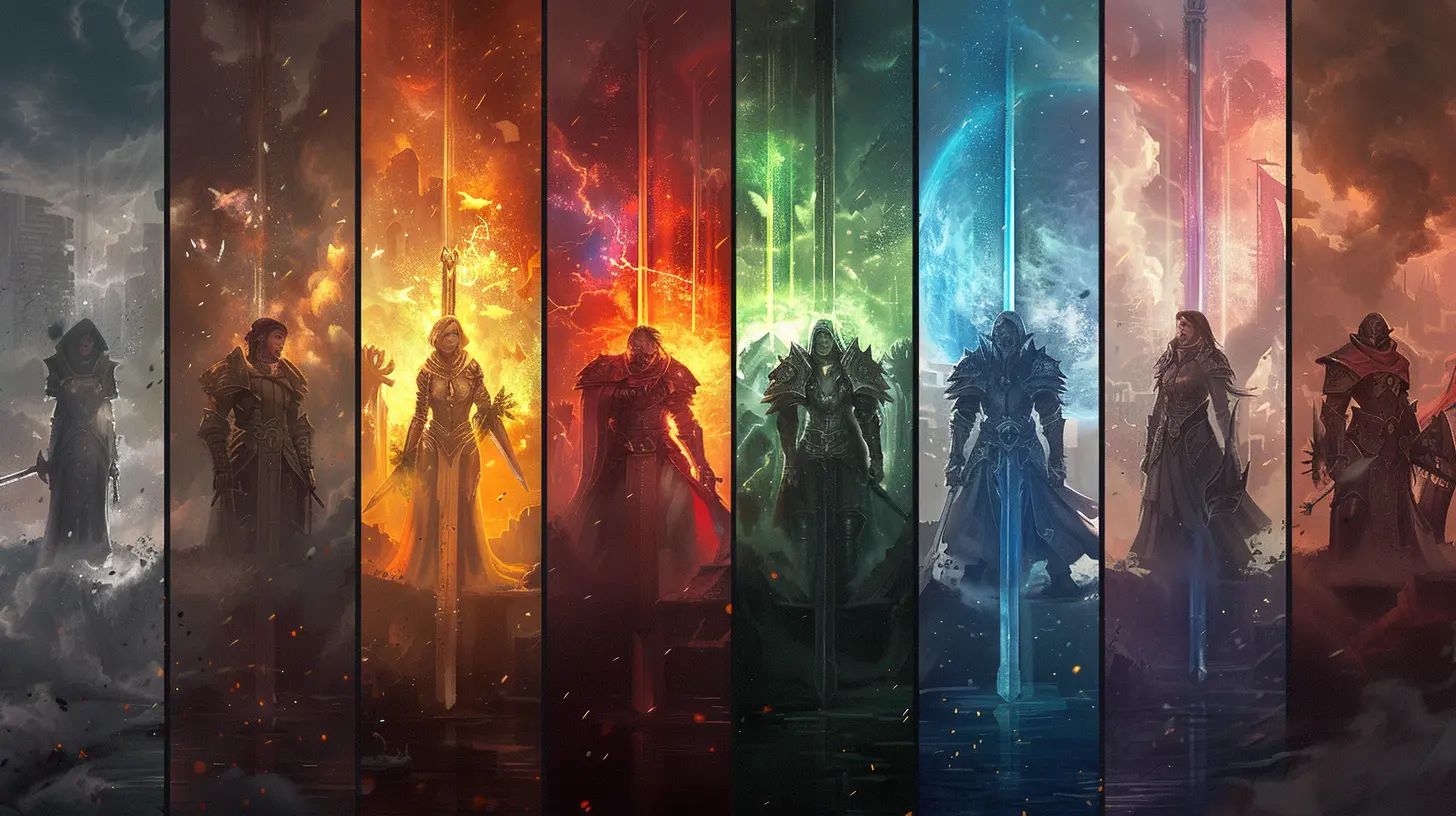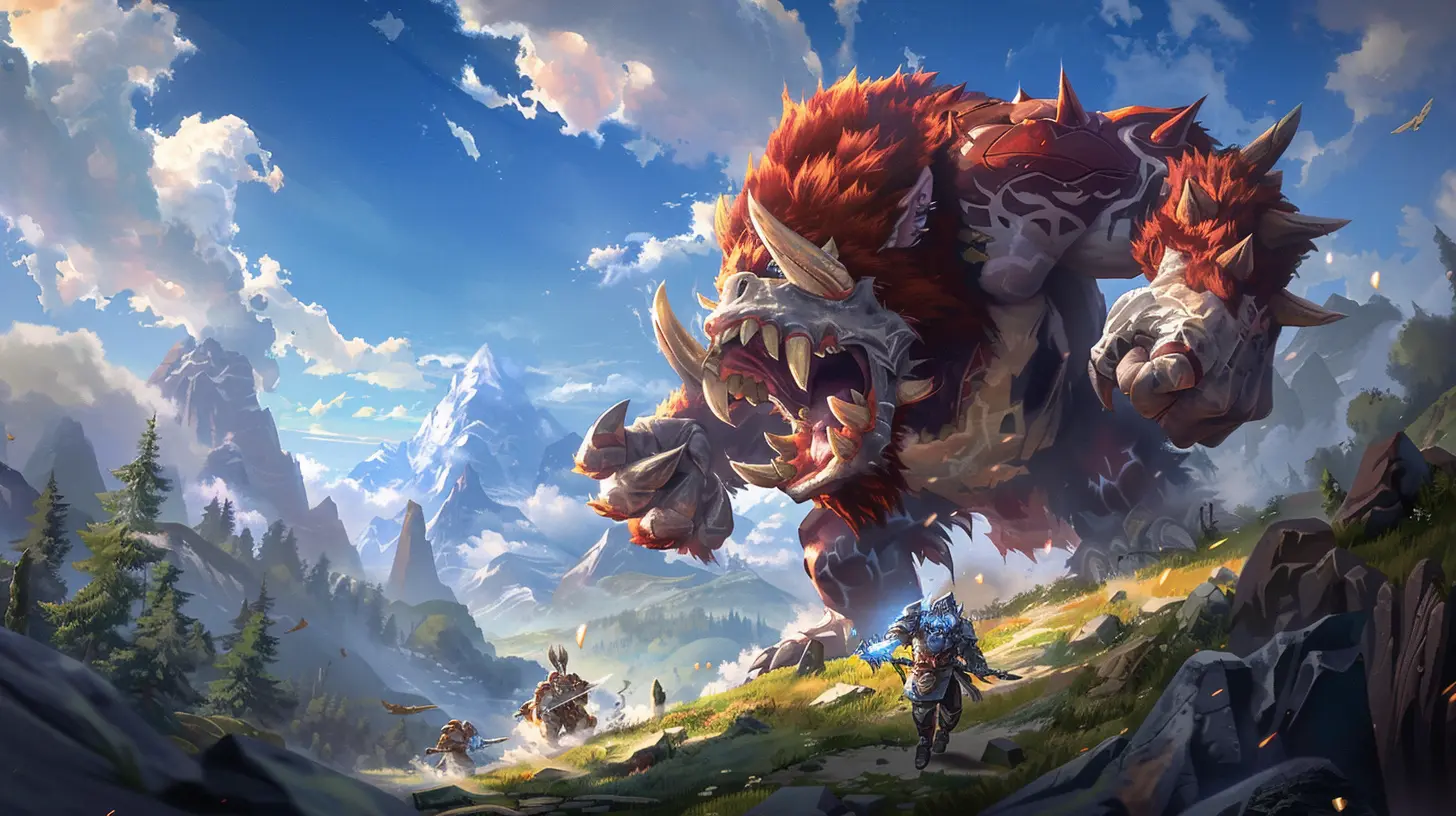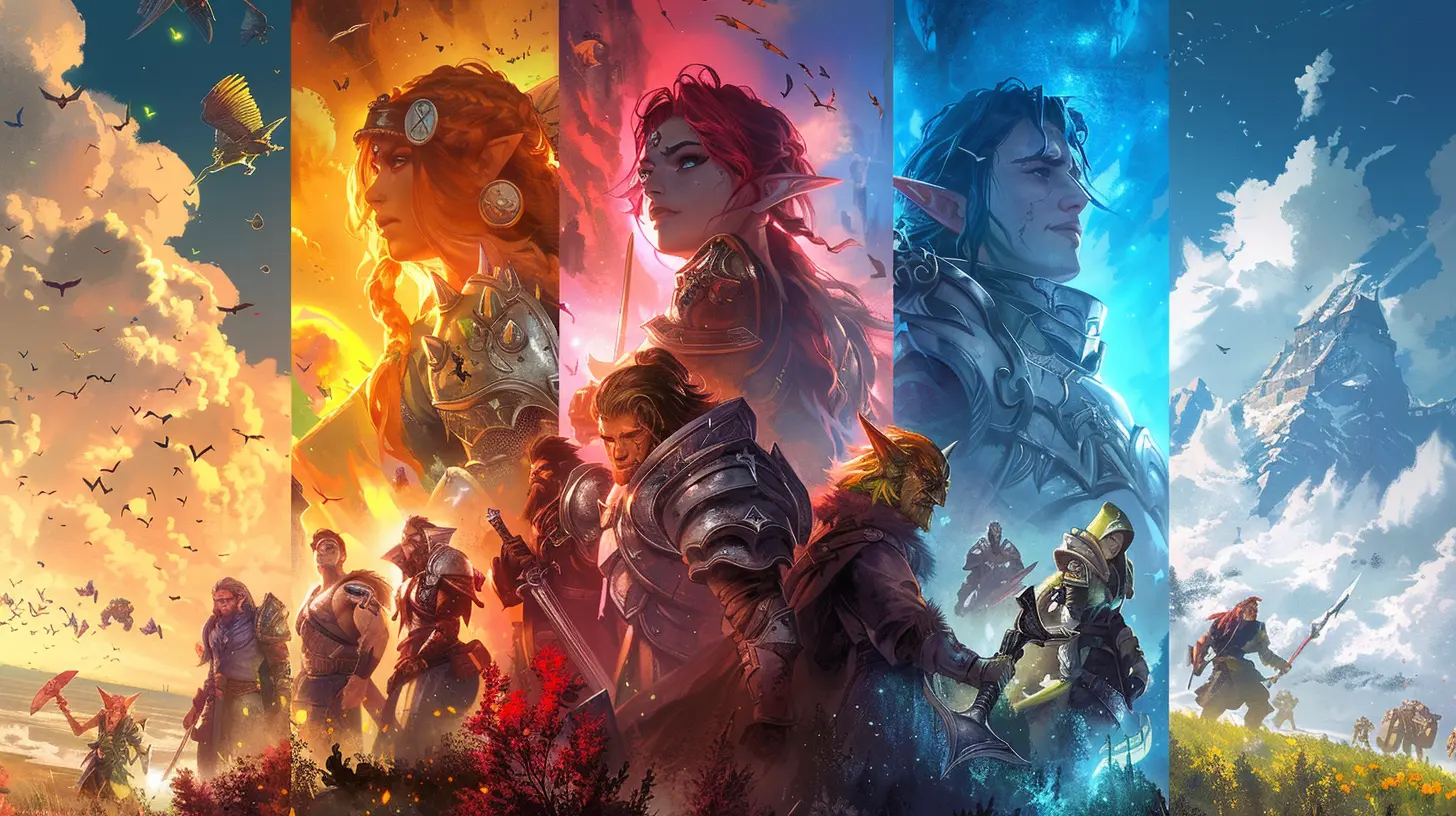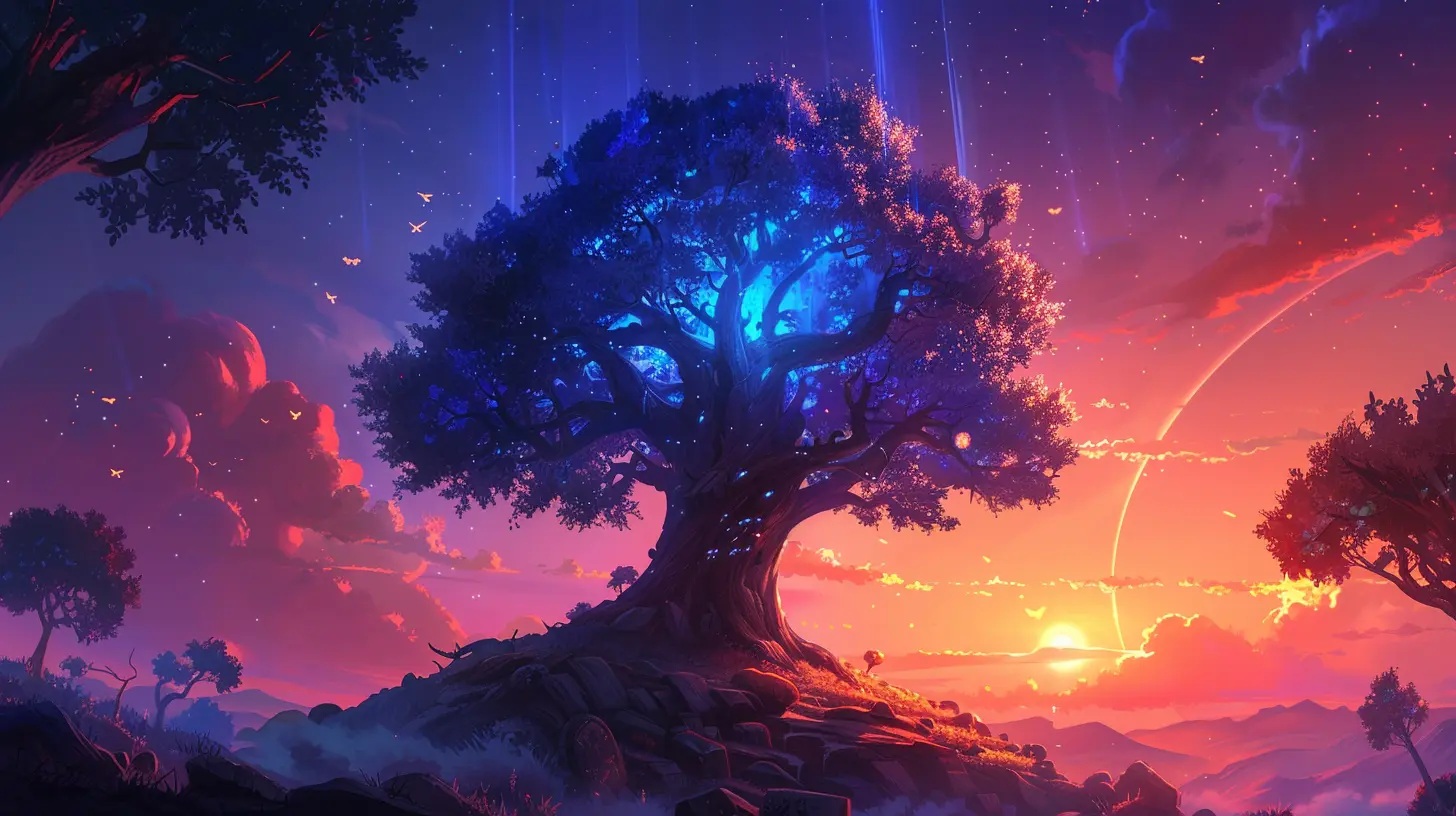Why Battle Pass Tiers Keep Getting Longer
22 September 2025
If you’ve dipped your toes into any live-service game in the past few years—think Fortnite, Apex Legends, Call of Duty Warzone, or even mobile games like Clash Royale—you’ve definitely come across a battle pass. One part reward system, one part daily grind motivator, the battle pass has become a staple in most competitive and casual multiplayer games.
But there’s a trend we can’t ignore anymore: battle pass tiers just keep getting longer. Every new season seems to ask for more time, more effort, and more gameplay hours. So what’s the deal? Why are developers upping the ante and stretching these tier ladders beyond reason?
Let’s break it down, tier by tier. 😎
What Is a Battle Pass, Anyway?
Let’s start at square one. In case you're new to the scene, a battle pass is a seasonal progression system in many games that gives players rewards—like cosmetics, skins, emotes, XP boosts, and sometimes in-game currency—for leveling it up.Usually, there’s a free track and a premium track. The premium version costs money (often around $10), but the rewards are often flashier and more plentiful. Battle passes are built to keep you engaged. Log in daily, complete challenges, and work your way to tier 100 (or higher).
Sounds simple, right? Well, it used to be.
The Evolution of Battle Passes
When Fortnite first popularized the battle pass model in 2018, it felt refreshing. You paid a one-time fee and earned your way through 100 tiers over the course of about 10 weeks. If you played semi-regularly, it was totally doable—and rewarding.But fast-forward to today, and things feel… different. The climb to the top feels taller. The grind feels heavier. And the rewards? More padded out, sometimes with filler content.
So, what changed?
Reason #1: Games Are Competing for Your Time
Let's face it—every game wants to be your "main game" now.Back in the day, you could dabble in a few titles throughout the week. These days? Between daily quests, timed events, and weekly battle pass challenges, it feels like your game is scheduling your life.
Making battle pass tiers longer is a strategy to keep players hooked and loyal to a single game. If you’re working toward unlocking that sick level 100 skin, you’re much less likely to hop over to another game mid-season.
Think of it this way: battle passes are like gym memberships. The more invested you are, the harder it is to quit—even if you’re burning out.
Reason #2: FOMO is a Powerful Motivator
We humans are wired to hate missing out.Companies know this. Game devs absolutely know this. That’s why battle passes often include limited-time rewards—you either get them during this run or you never get them at all. Period.
So, by stretching the number of tiers and making the grind a bit more demanding, they crank the FOMO dial up to eleven. You feel like you have to log in every day to stay on track. Skip a few days? Suddenly that epic final reward is slipping through your fingers.
This constant pressure to not miss out makes longer battle passes more effective at keeping players engaged even when the content isn’t all that new or exciting.
Reason #3: More Tiers = More Microtransaction Opportunities
Let’s not sugarcoat it—longer battle passes create more ways to monetize.Running low on time but still stuck at tier 57? Don't worry, you can buy your way to the top. Convenient, right?
Many modern games offer tier skips for real money. Some even offer XP boosters to speed up your progress. The longer the ladder, the more likely it is that players will cough up a few bucks to save time or avoid the grind.
It’s clever (and a little bit evil), but it works. The longer the pass, the more friction players face—and the more likely they are to pay to ease that pain.
Reason #4: Longer Seasons, Longer Passes
Extend the season, extend the pass—it’s a simple equation.Some games are releasing fewer seasons per year but extending how long each season lasts. To keep players entertained throughout, they increase the number of battle pass tiers. That way, the progression doesn’t feel stale before the next update hits.
So you might see passes that go beyond tier 100, even up to 200 or more. It’s an attempt to stretch content to fill a longer runway, keeping you invested week after week, month after month.
Reason #5: Players Keep Playing Longer (And Developers Know It)
Let’s be honest—gamers play more than ever.Between streaming, esports, and gaming becoming more mainstream, people are logging hundreds (or thousands) of hours into the games they love. Developers track this data down to the second. They know how long the average player spends in-game, how quickly battle pass tiers are finished, and what milestones lose momentum.
If too many players are flying through the tiers too quickly, they see it as wasted engagement potential. So what do they do? They stretch it. Make players work harder. Add more challenges. Toss in filler. Boom—problem solved.
Reason #6: Content Padding and Artificial Progression
Ever noticed how some battle pass rewards feel a bit… meh?That’s no accident. Stretching battle passes often means adding filler rewards—basic banners, XP tokens, or lackluster skin variants—to pad out the journey. Instead of giving you 75 great items, they give you 150 okayish ones spread out across more tiers.
It’s quantity over quality—and it sometimes feels like you're scrolling through a discount aisle of cosmetics you don't even want. But hey, that shiny tier 100 reward is still there, taunting you like a pot of gold at the end of the grindbow. 🌈
Is the Grind Actually Worth It?
This is the million-dollar question. Some players see longer battle passes as a challenge—a mountain they want to conquer. Others just feel exhausted.If you have the time and genuinely enjoy the game, then sure, a long battle pass can be fine. But if you're juggling school, work, or other games, it starts to feel like homework. And let's be real—when your favorite hobby starts feeling like a second job, it kind of defeats the purpose of playing games in the first place.
Are There Better Alternatives?
Absolutely. Some games are experimenting with alternatives:- Flexible Season Passes: Games like Halo Infinite now allow old battle passes to be completed even after the season ends. No FOMO.
- Smaller Passes With More Impactful Rewards: Instead of 100+ tiny rewards, how about 30 awesome ones?
- Daily or Weekly Mini-Passes: Shorter-term progression goals that don’t require a full-season commitment.
There’s room for innovation. It’s just a matter of whether developers want to lean more into player satisfaction or profit margins.
What Can Players Do?
Good news—you’re not entirely powerless here.- Speak up: Developers (the good ones, at least) do listen to community feedback. Voice your thoughts on forums, subreddits, and social media.
- Play smart: Use XP boosts wisely, knock out weekly challenges early, and coordinate with friends for faster progress.
- Don’t succumb to FOMO: It’s okay to miss a pass or not hit tier 100 every season. The world won’t end—and you won't turn into a default skin for life.
And remember, it’s perfectly okay to take breaks. Games should fit your life, not the other way around.
Final Thoughts
So, why do battle pass tiers keep getting longer? Because companies have figured out that the more time you spend playing, the more likely you are to stick around, spend money, and become a loyal player. That’s the goal. But that doesn’t mean you have to buy into the grind.At the end of the day, battle passes are just one part of the gaming experience. Enjoy them when they’re fun. Skip them when they’re not. And always, always prioritize your own gaming happiness over a digital reward track.
Stay balanced, stay sane, and don’t let the grind grind you down.
all images in this post were generated using AI tools
Category:
Battle PassesAuthor:

Madeleine McCaffrey
Discussion
rate this article
1 comments
Kason O'Brien
The increasing length of Battle Pass tiers reflects developers' goals to retain player engagement and extend monetization periods. While it can enhance the game’s longevity, it may also risk player frustration. Striking a balance between rewarding progression and maintaining player interest is essential for future success.
September 22, 2025 at 3:18 PM

Madeleine McCaffrey
You raise an important point. Balancing player engagement with frustration is crucial, as longer tiers can enhance monetization but must also keep players motivated to play.


